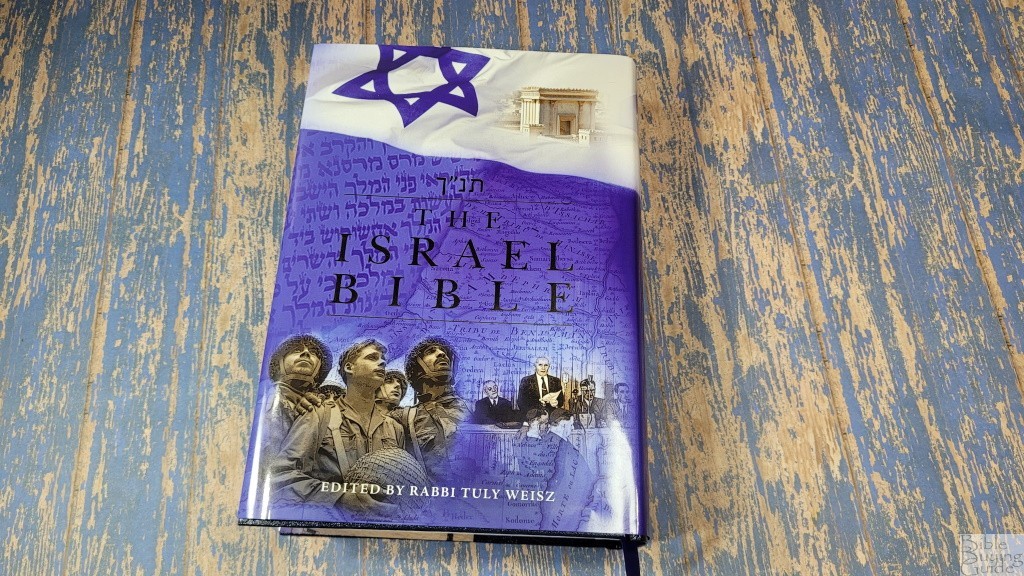
The Israel Bible, edited by Rabbi Tuly Weisz, is a Hebrew/English parallel Bible with the purpose of promoting the biblical significance of the land of Israel and how it’s connected to the people of Israel. This is the Hebrew Bible, also known as the Tanakh. It covers the books Christians consider to be the Old Testament. In the Hebrew Bible, these are the Torah (Five books of Moses), Neviim (the Prophets), and Ketuvim (the Writings). It places them into 24 books in Hebrew order and includes the Jewish verse numbering. The website includes more multimedia features. The Israel Bible was first published in 2018. I’m reviewing the second edition, published in 2021. This is ISBN: 9781733301015, printed and bound in Italy.
Israel 365 provided this Bible in exchange for an honest review. I was not required to give a positive review, only an honest one. All opinions are my own.
_________________________________________________________
This Bible is available at (includes some affiliate links)
and local Bible bookstores
_________________________________________________________
Table of Contents
- Video Review
- Materials and Construction
- Typography
- Book Introductions
- Study Material
- Thoughts on The Israel Bible
Video Review
Materials and Construction
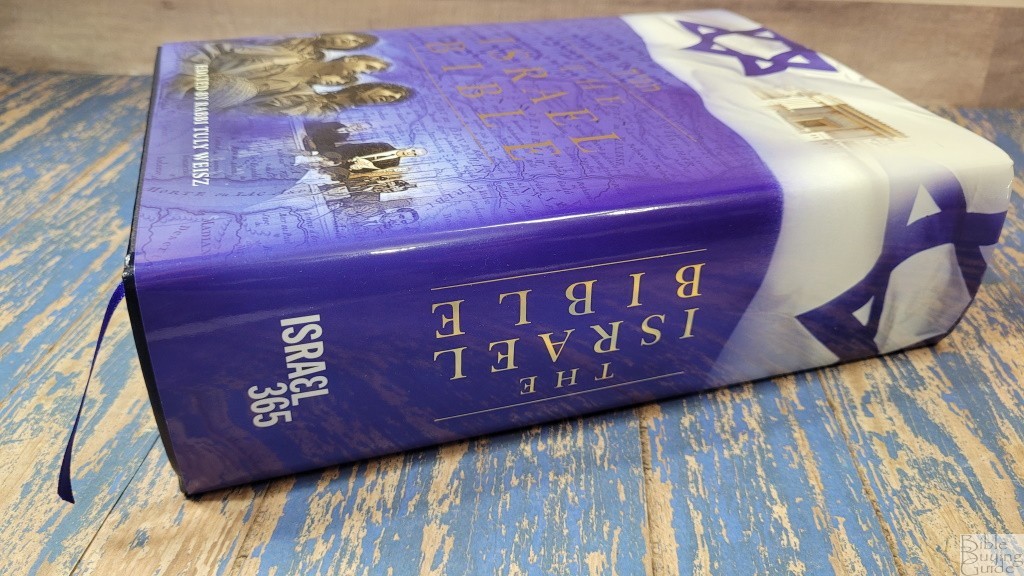
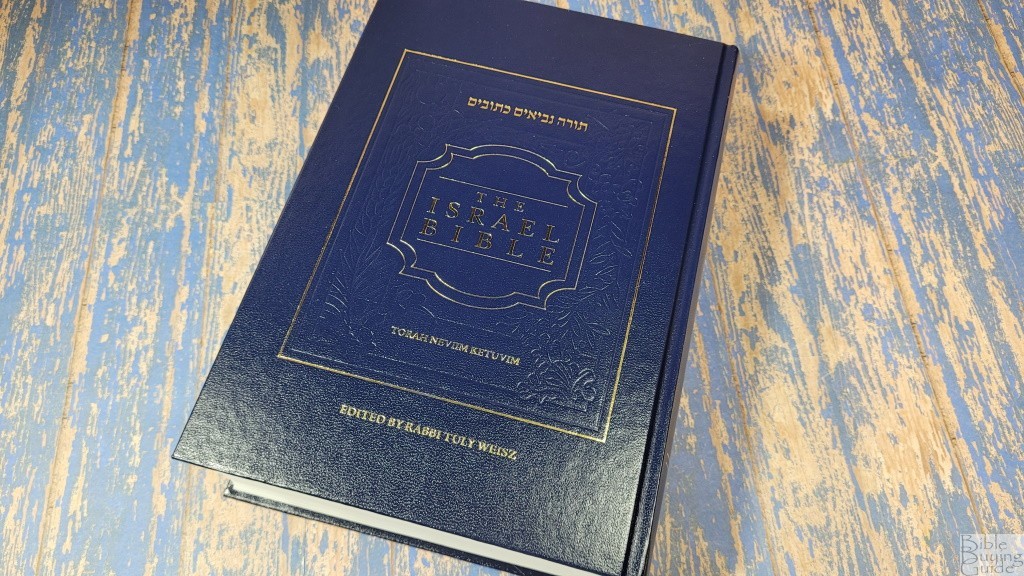
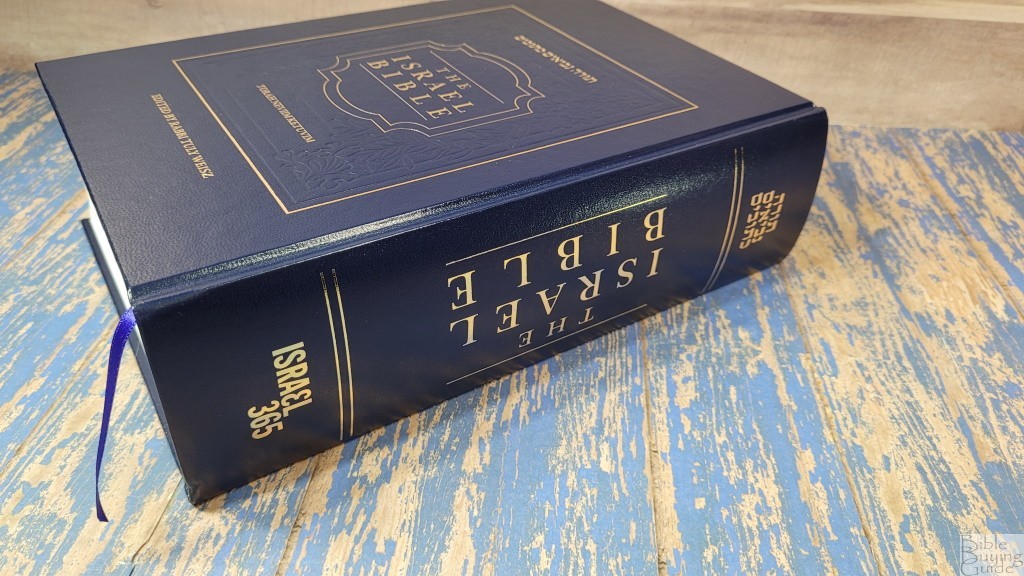
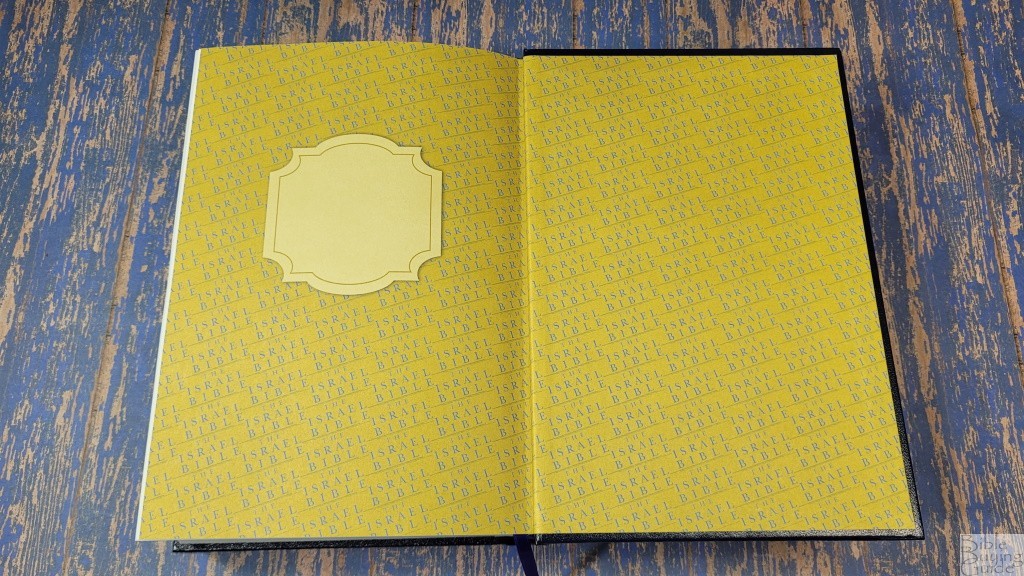
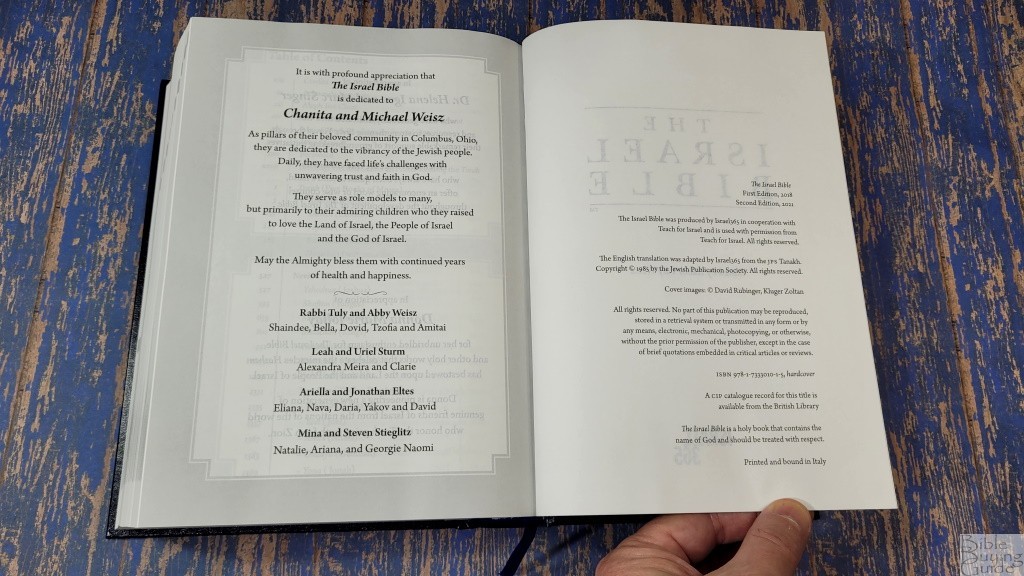
This is a hardcover edition. It’s sewn and includes a dust jacket and ribbon. The hardcover looks amazing, so I recommend removing the dust jacket. The book opens like a traditional Jewish book from left to right. Pages are read on the right side first, and then the left side. The paper is thick. It seems to be a quality paper. It’s off-white and extremely opaque. The color is perfect for reading. Page edges mark the location of each book, creating an index. The overall size is 6.75 x 9.5 x 2.75″. It weighs 4 lbs, 15,1 oz. It looks to be well-made.
Typography
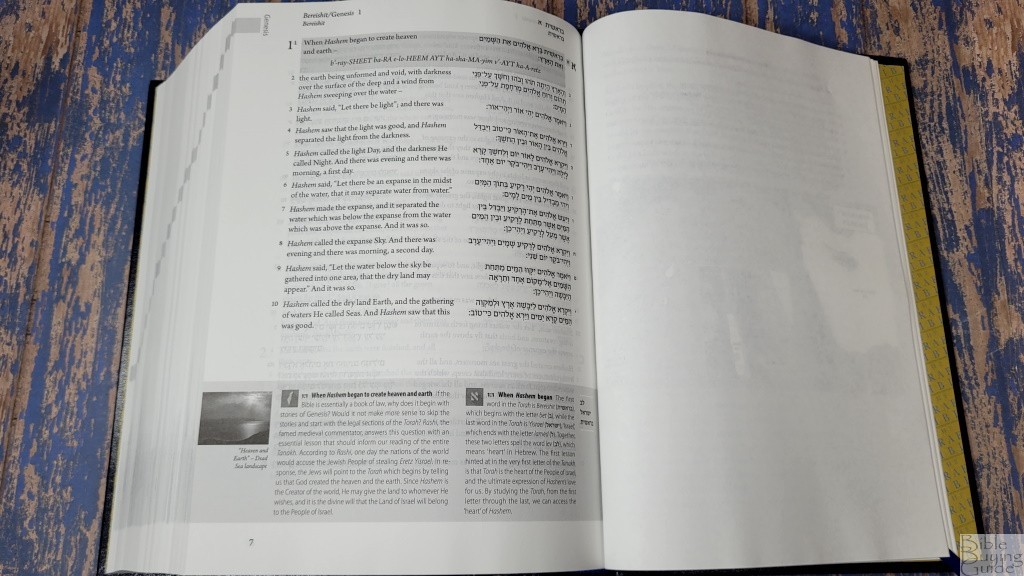
The Israel Bible is a parallel Study Bible with the Hebrew text and a slightly modified version of the NJPS Tanakh for the English translation. Modifications are a list of nouns that were replaced with traditional Hebrew names. The Hebrew text is placed in the right column and the NJPS is placed on the left. Both are in a verse-by-verse layout with no formatting to inform of the genre. Books are placed in their Jewish order, which is separated into The Law, The Prophets, and The Writings. Verses are numbered according to the Jewish numbering. The header shows the book name and chapter number in English in the left column and Hebrew in the right column. The English text in the header includes the Hebrew and English names.
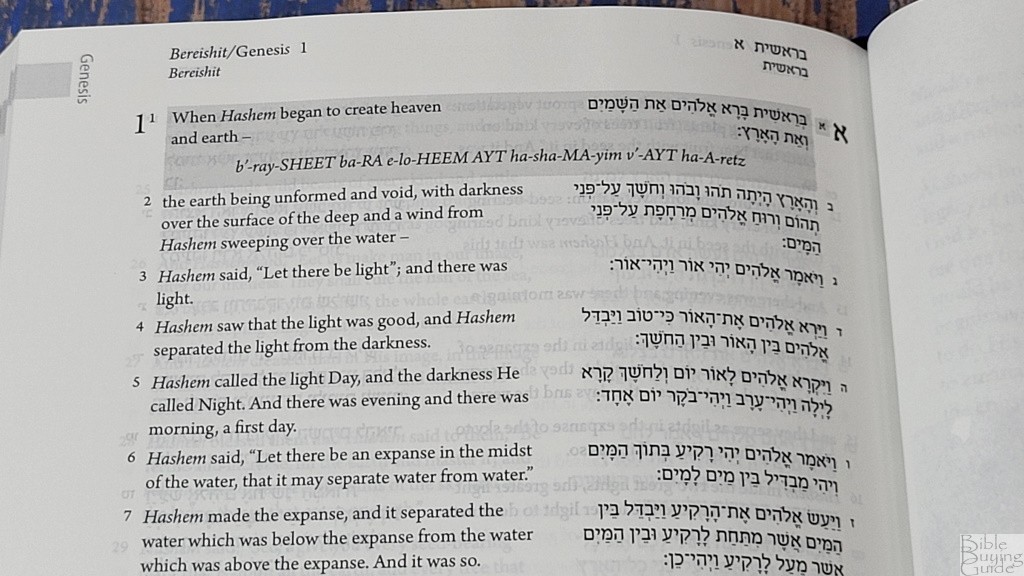
Fonts are 9-point with an extra-large leading. It has around 8 words per line. The Hebrew text is bolder than the English. Both are dark and highly readable. Some of the text includes transliteration. These are the verses that have commentary at the bottom of the page. They’re highlighted in the text with a darker background. The parallel is the main part of this Bible, making this layout great for anyone learning Hebrew.
Book Introductions
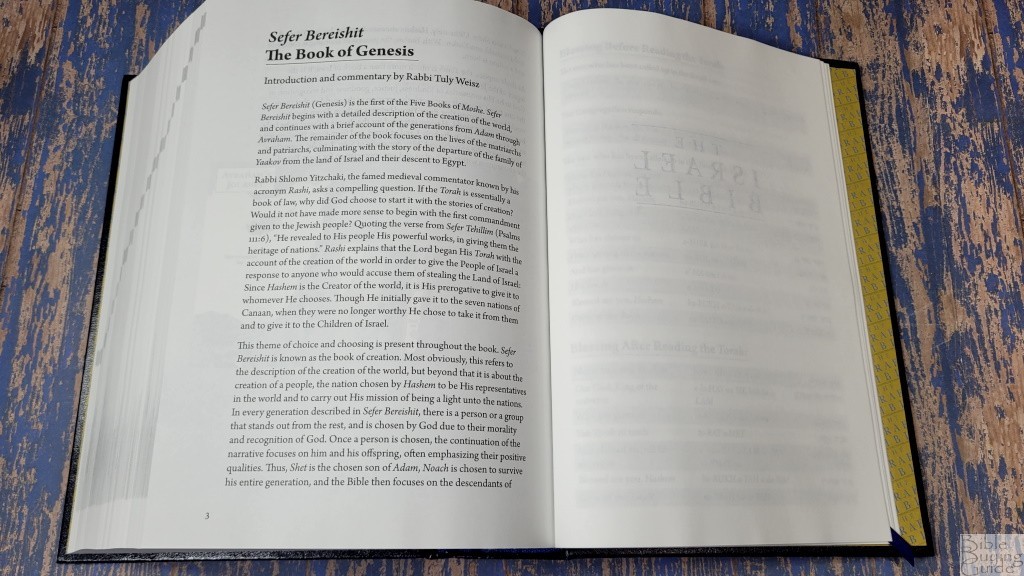

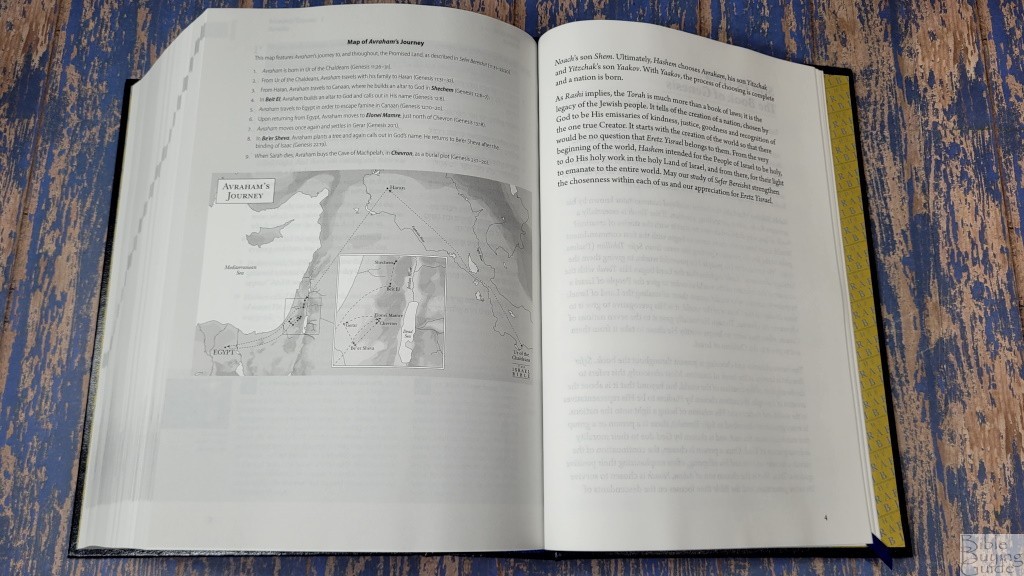
Book introductions provide the author’s name that wrote the introduction and commentary. They cover some of the major teachings in the book and how they applied to Israel. They also mention prominent rabbis or other teachers in history and what they taught from the book. Introductions include a chart, map, or table. Books that are combined, such as 1 and 2 Chronicles, have one introduction.
Study Material
All the study material is in English. The material includes commentary and tables. The tables are mostly lists of information. Many of the tables have a pronunciation guide. Following the pronunciation does ensure that you pronounce words correctly. This helps in learning Hebrew.
Front

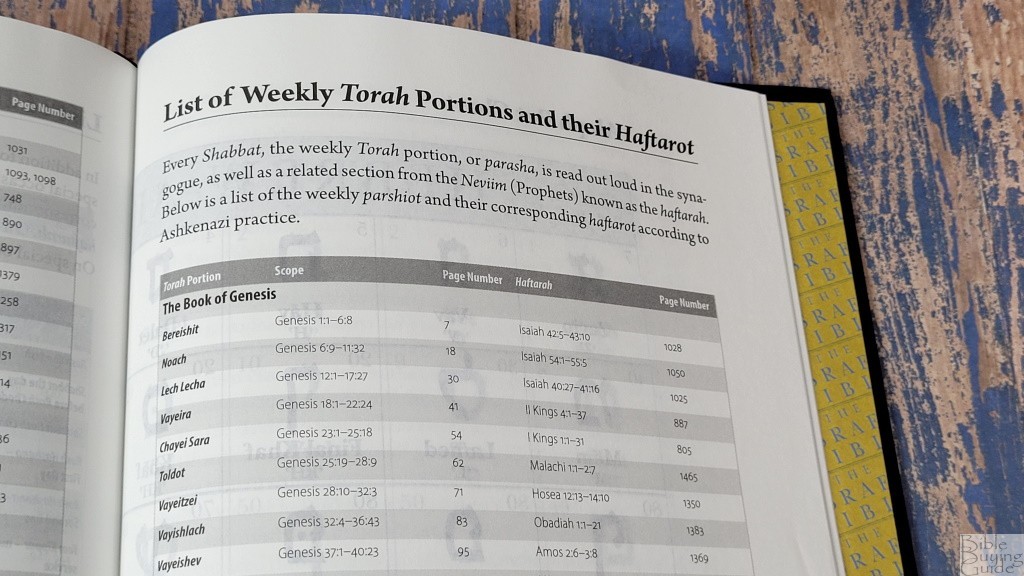
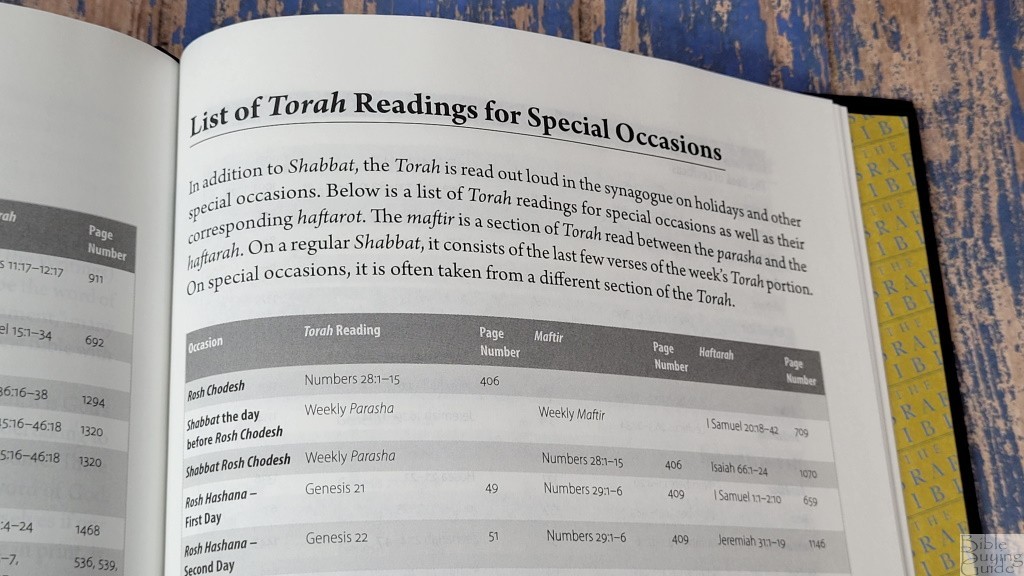
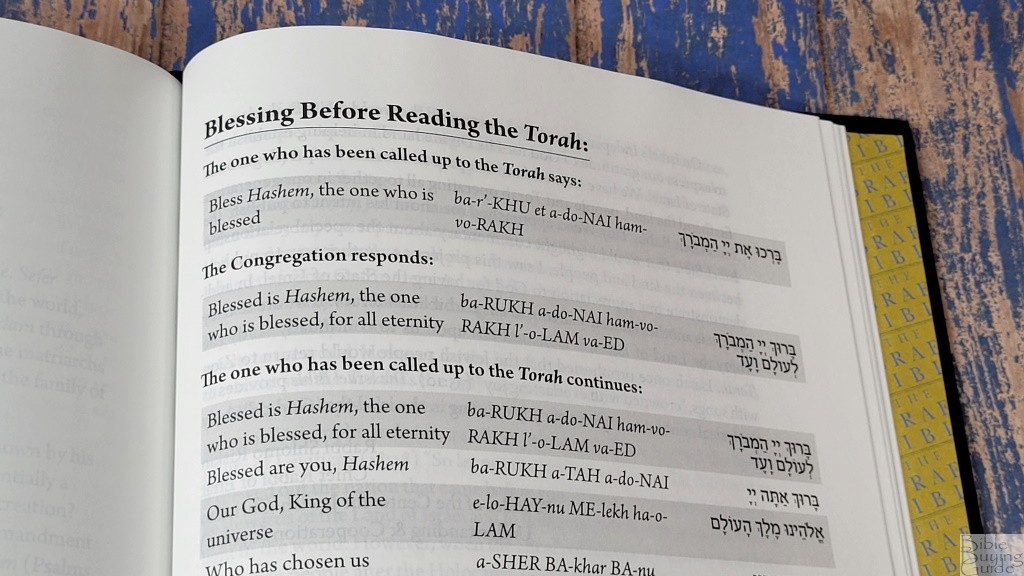
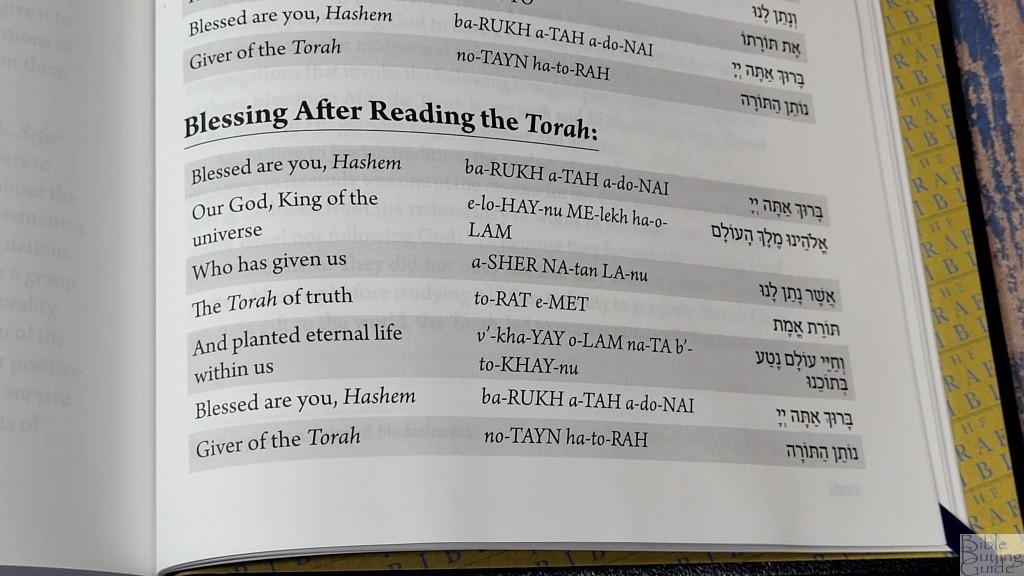
In the front are several charts with information and special readings. They include:
- Aleph Bet Chart
- List of Weekly Torah Portions and Their Haftarot
- List of Torah Readings for Special Occasions
- Introduction
- Blessings Before Reading the Torah
- Blessings After Reading the Torah
The aleph bet and list of transliterated words are especially helpful because they can help in learning Hebrew.
Commentary
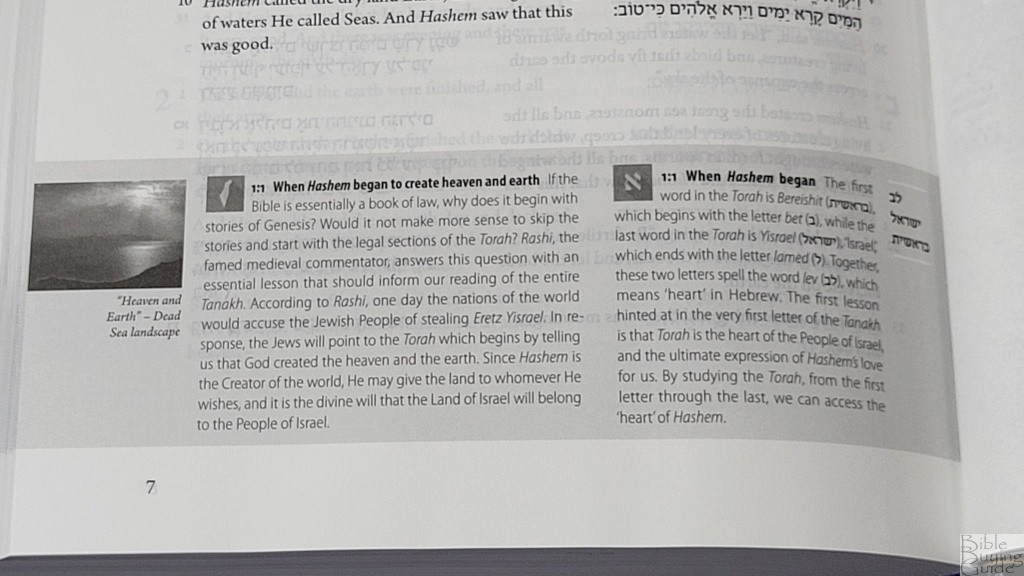
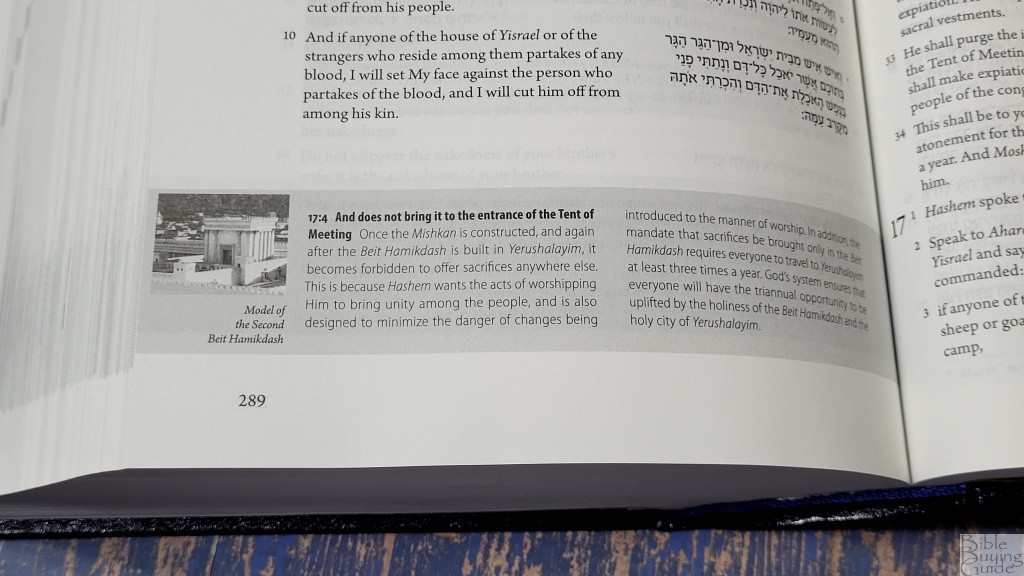
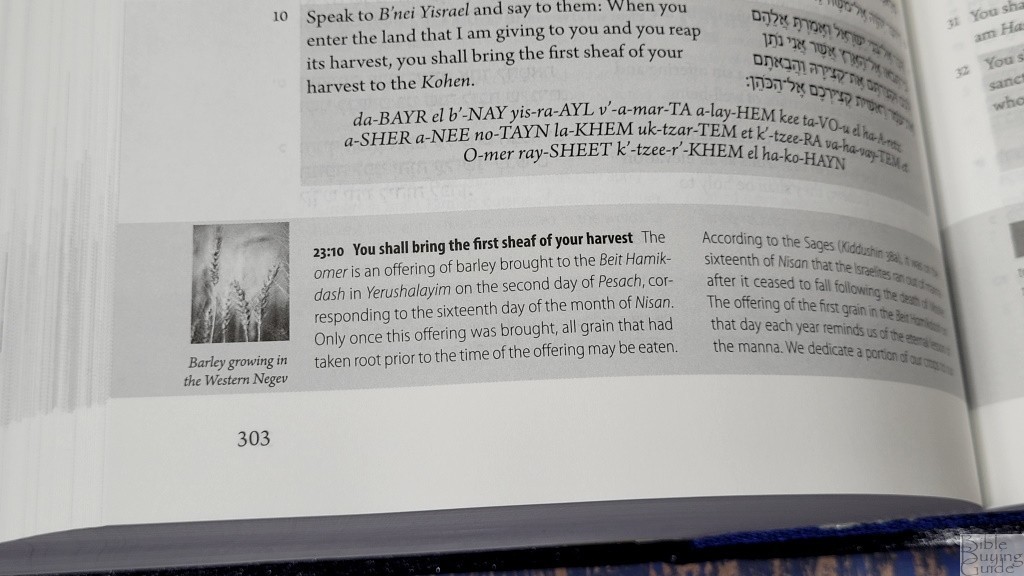
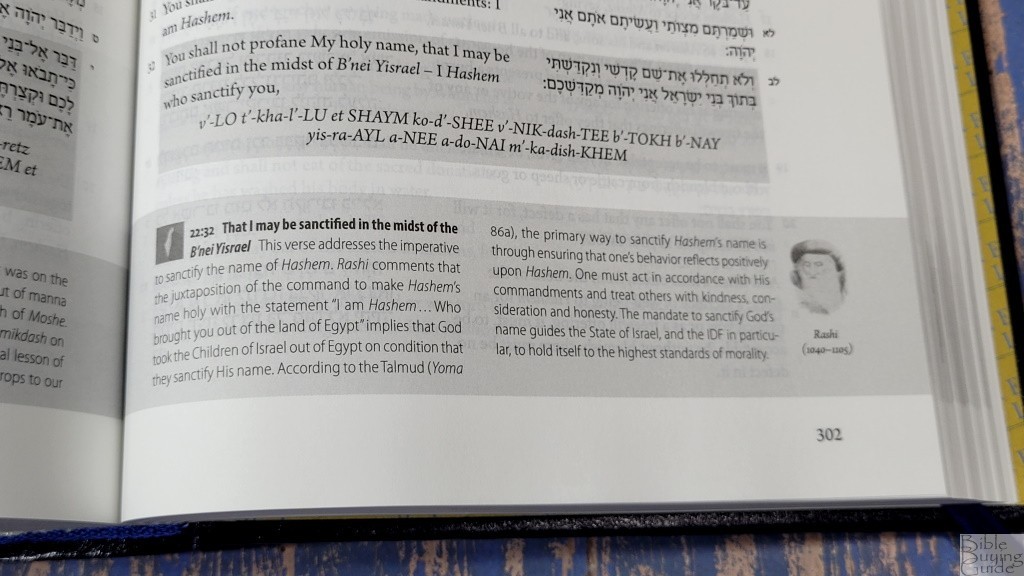
The commentary is placed at the bottom of the page. It includes the verse number and phrase in bold. Many of them include a black-and-white photo of the commenter with their name, or the place or thing the notes refer to. All notes and materials are from an Orthodox Jewish perspective by scholars that live in Israel. The commentary isn’t new. Most come from early Jewish sages and modern rabbis. Others include prime ministers, poets, and military leaders. There are four categories that include Israel Lessons, Jewish Lessons, Hebrew Lessons, and general comments. The first three have special icons to indicate the type of comment. They’re not placed on every page. Most of the comments are short and typically cover one verse on a page. Although, there are several pages that have multiple comments. It’s interesting seeing the Jewish perspective and application.
Back
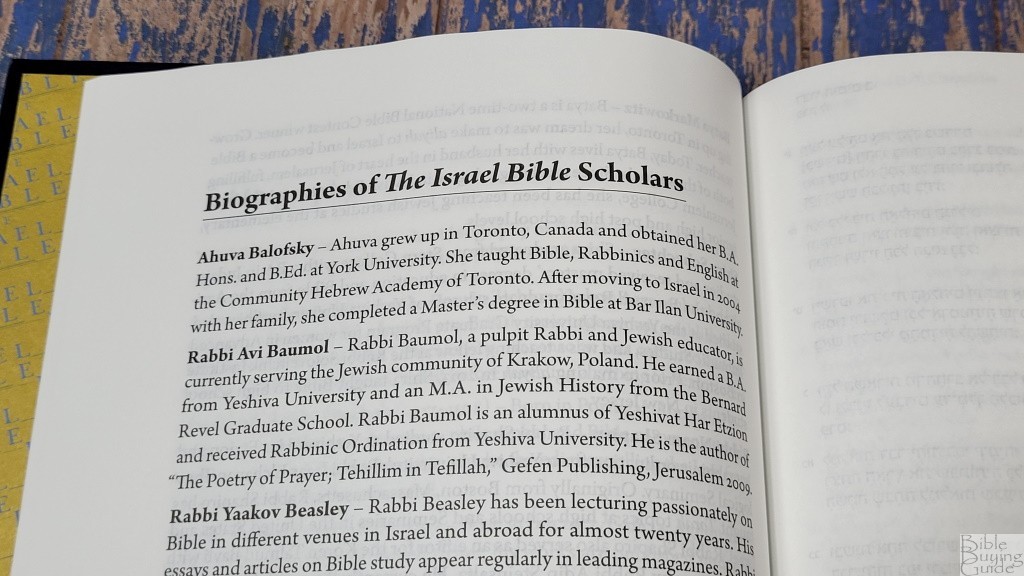
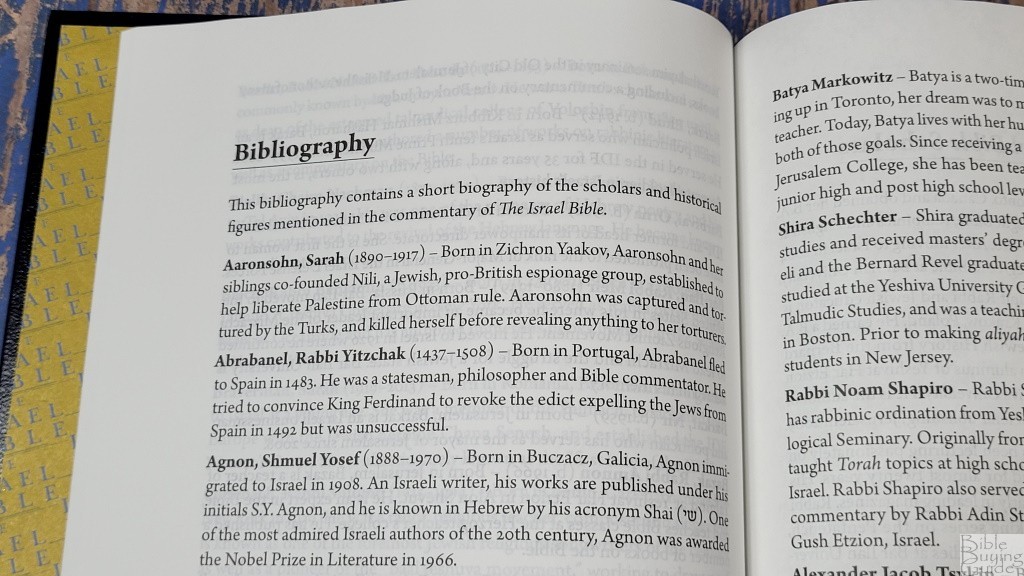
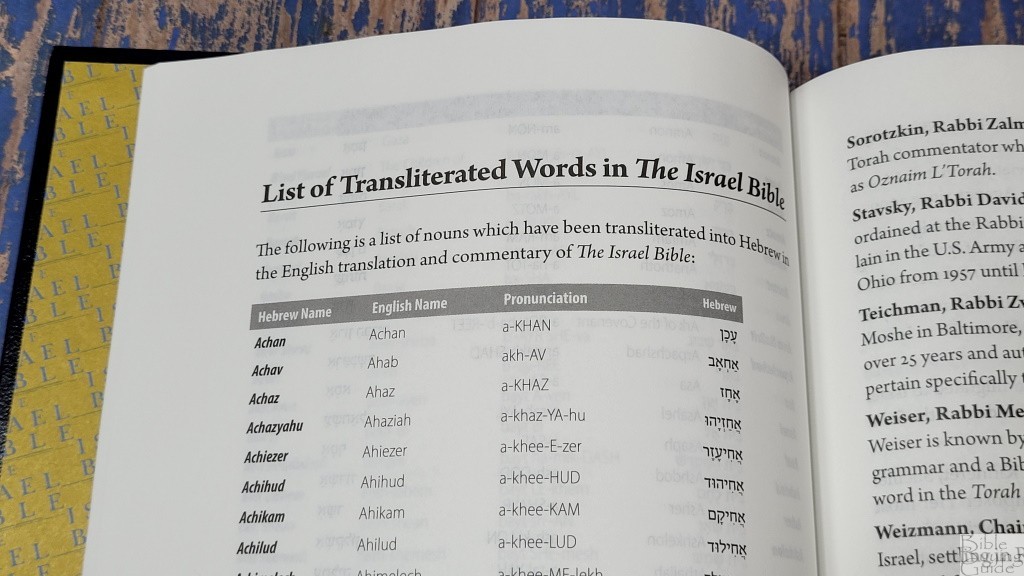
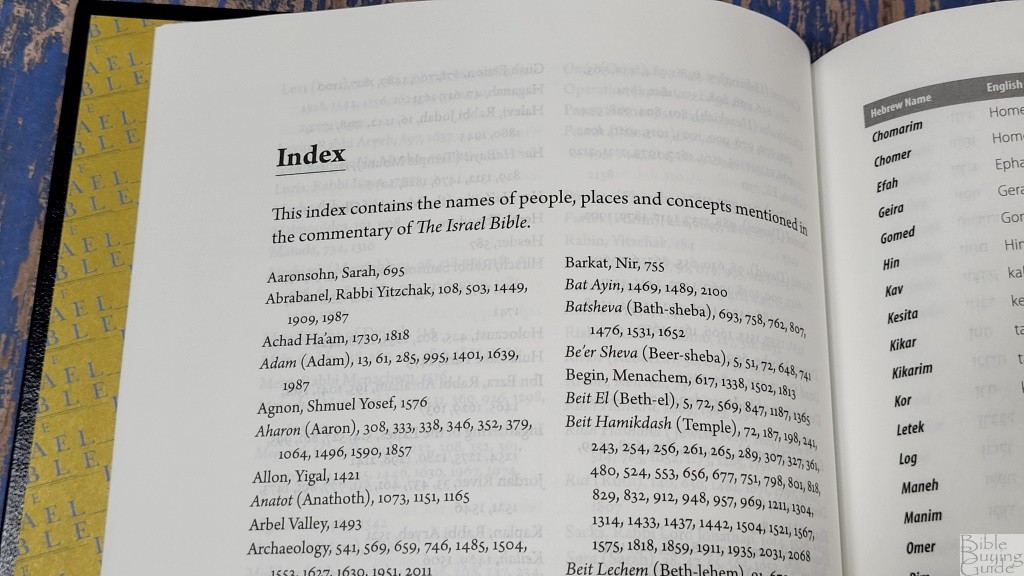
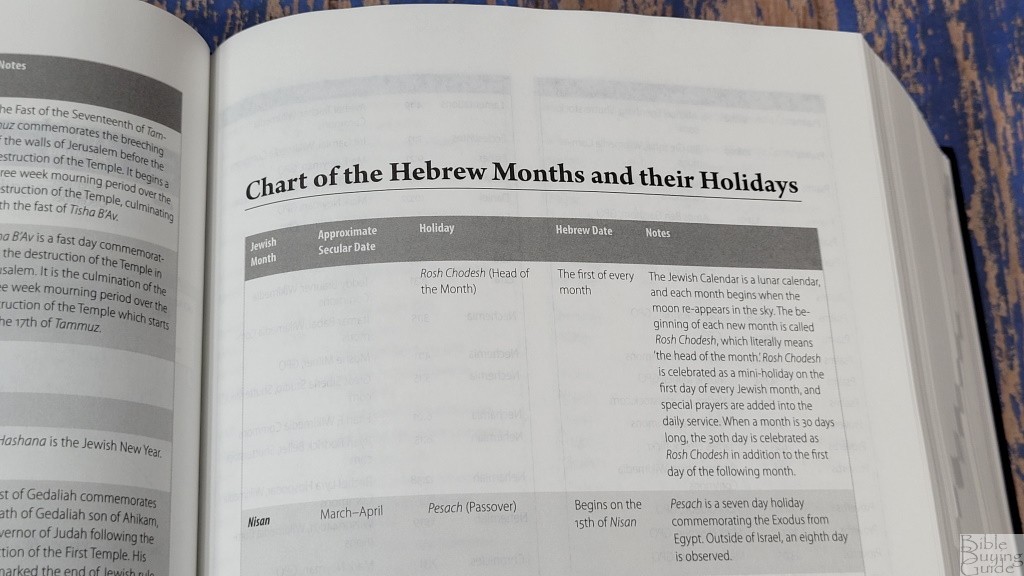
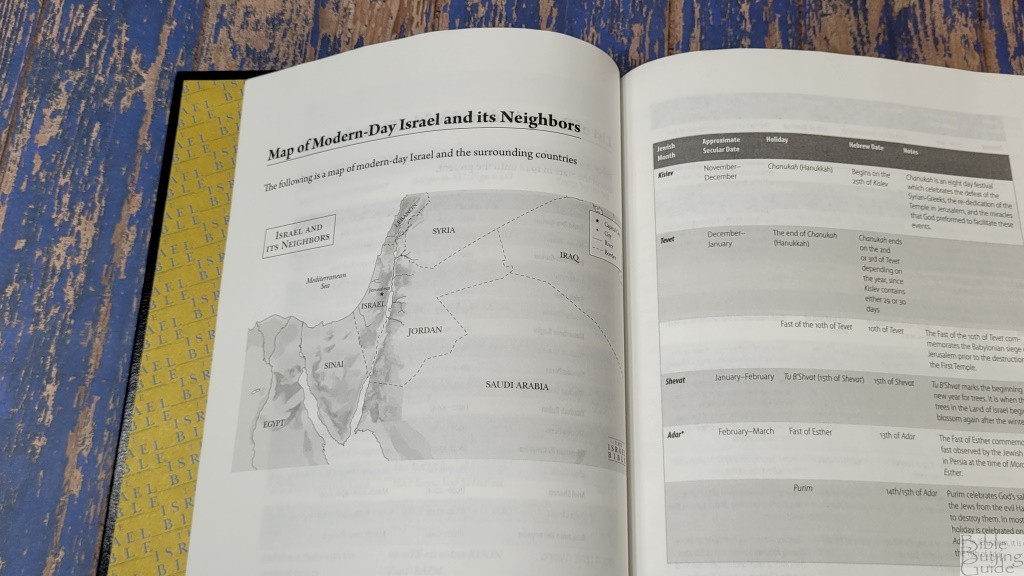
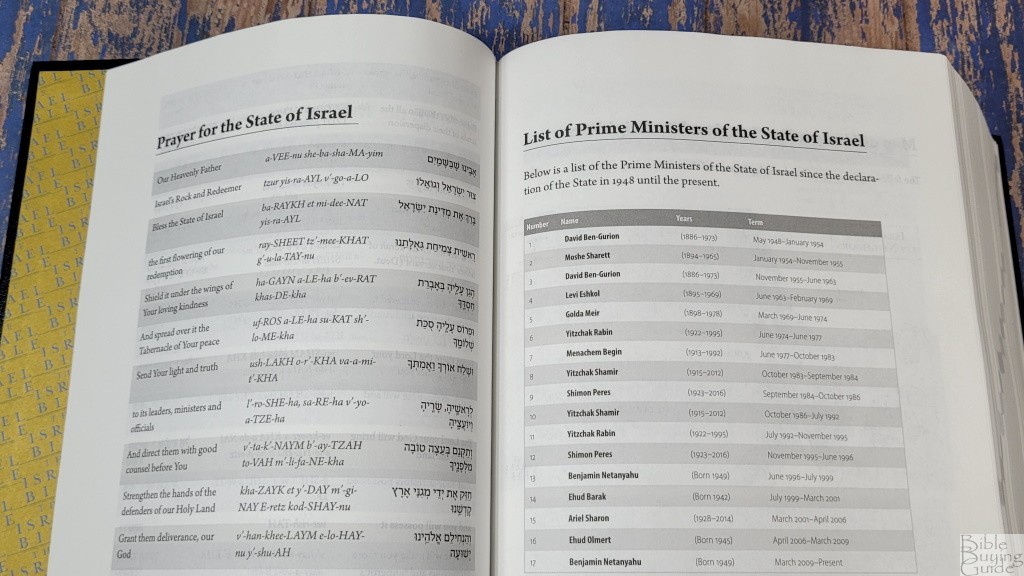
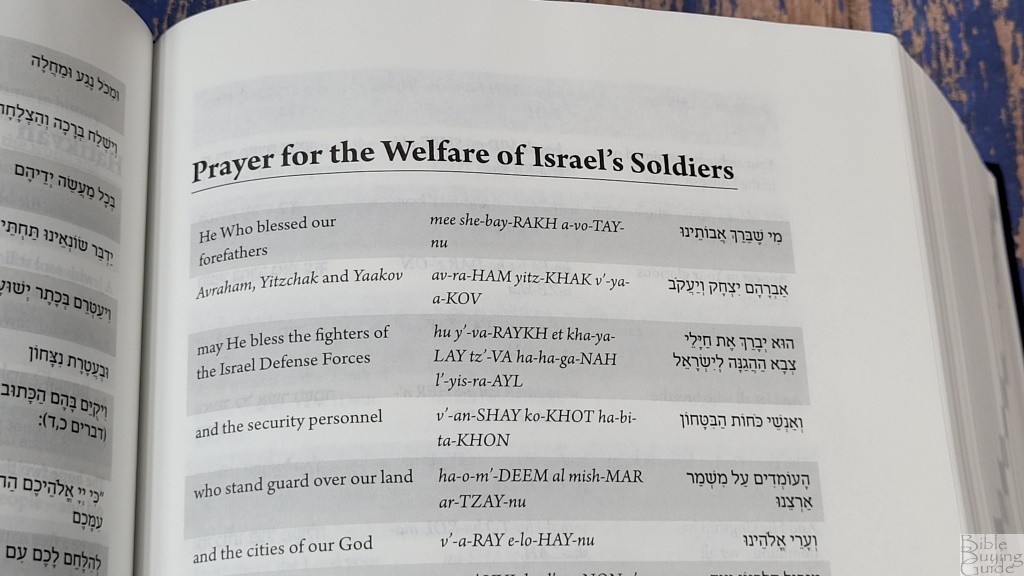
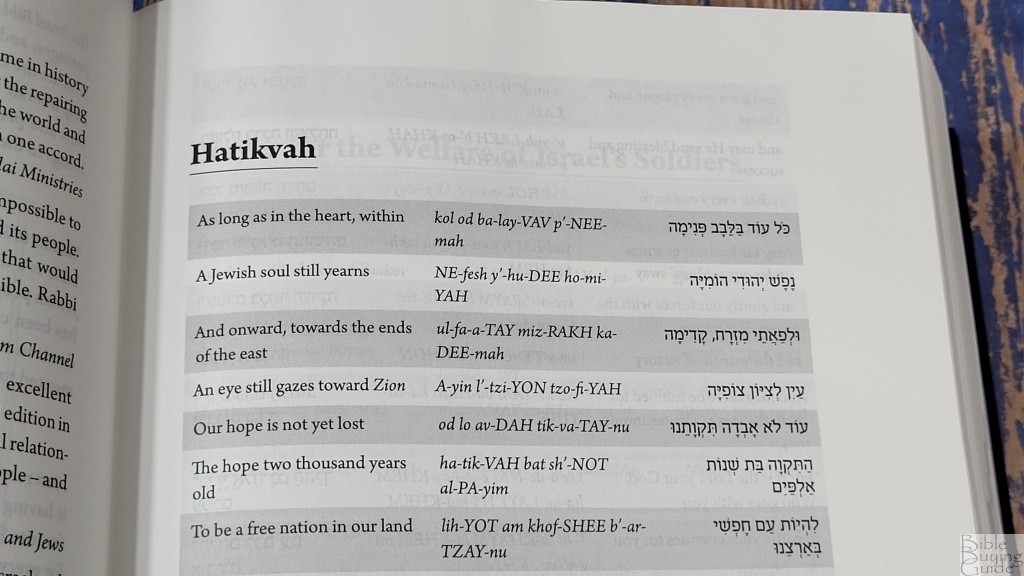
Materials in the back are mostly charts and lists. Most are tables that take a couple of pages. They include:
- Biographies of The Israel Bible Scholars
- Bibliography
- List or Transliterated Words in The Israel Bible
- Index
- Chart of the Hebrew Months and their Holidays
- Map of Modern-Day Israel and its Neighbors
- List of Prime Ministers of the State of Israel
- Prayer for the State of Israel
- Prayer for the Welfare of Israel’s Soldiers
- Hatikvah
Thoughts on The Israel Bible
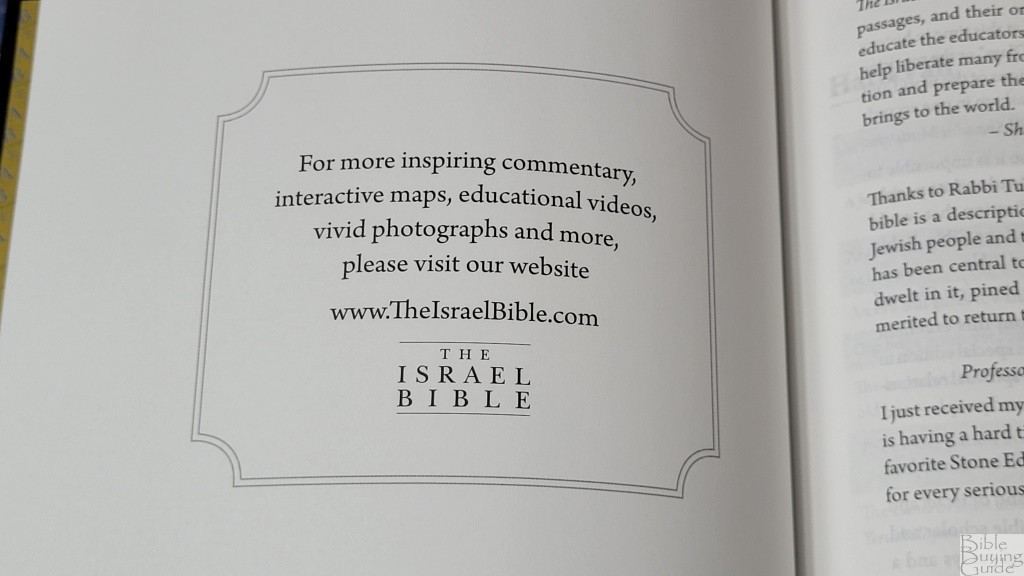
I’ve been studying and collecting Messianic Jewish material (Messianic Jewish set on Logos) and translations (TLV, Complete Jewish Study Bible), and Jewish translations (JPS, Jerusalem Bible), so I was intrigued by The Israel Bible. It’s fascinating to see teaching and commentary that focuses on Israel. I am Christian, so I disagree with some of the conclusions in the commentary that pertains to the Messiah. I see passages applying to the Messiah that they do not. Still, it’s interesting to see a different perspective. As always, I recommend using the commentary as a reference and do your own study.
The main portion of this Bible is the Hebrew and English parallel. This, along with the aleph bet, spellings, and pronunciations can be a great help to any student of the Hebrew language. I recommend The Israel Bible to any student of Hebrew and anyone that wants to learn more about Israel in the Bible.
_________________________________________________________
This Bible is available at (includes some affiliate links)
and local Bible bookstores
_________________________________________________________
Israel 365 provided this Bible in exchange for an honest review. I was not required to give a positive review, only an honest one. All opinions are my own.



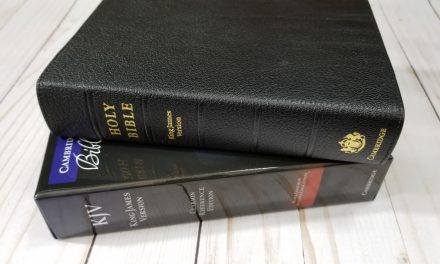
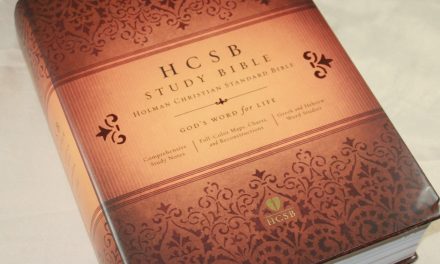







Recent Comments